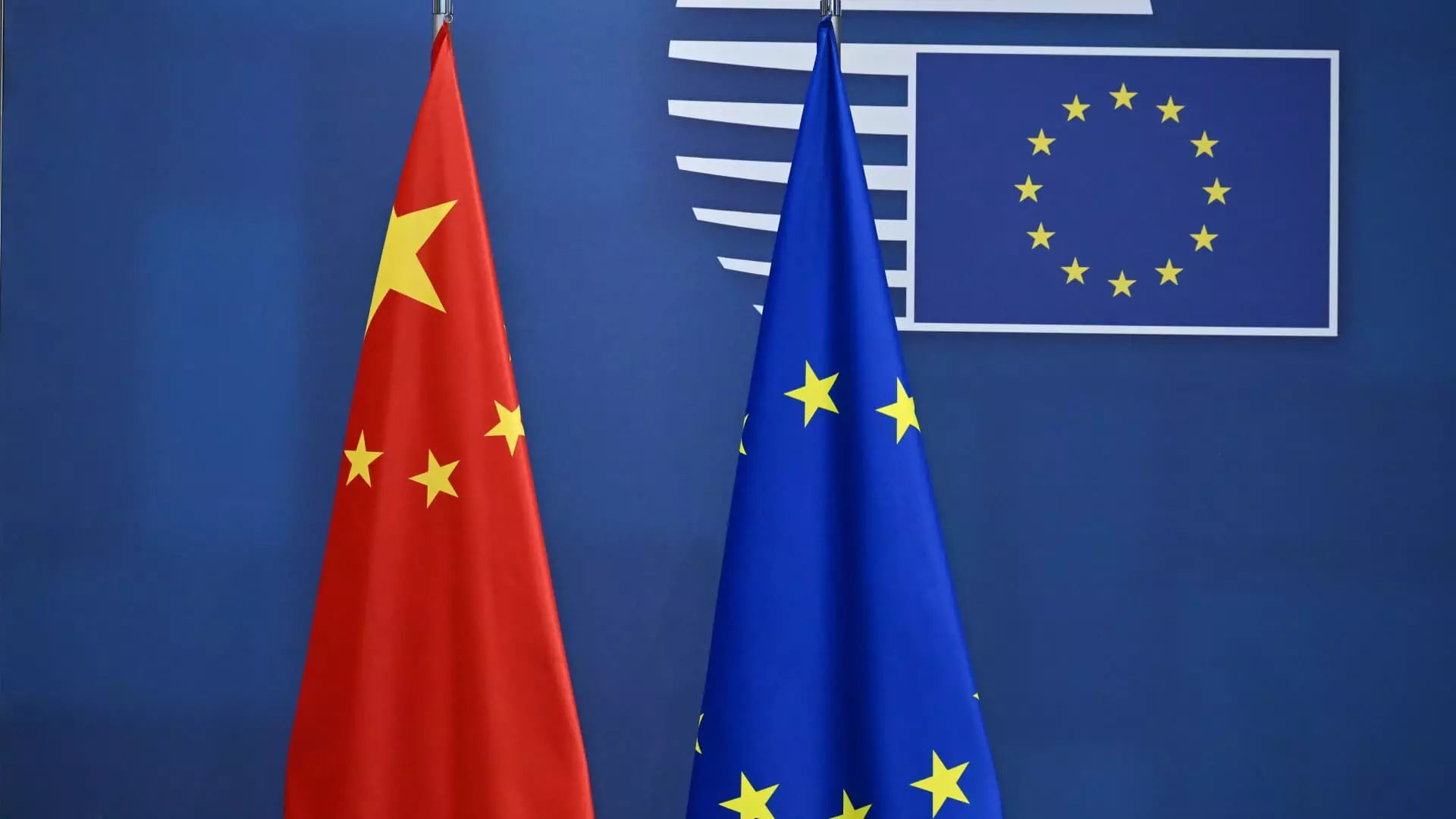In an era marked by escalating global trade tensions, the Cold War-esque confrontation between the European Union and China exemplifies a dangerous shift from cooperation to brinkmanship. What once seemed like a promising partnership rooted in mutual economic growth has now devolved into a saga of suspicion, protectionism, and strategic rivalry. The very fabric of their economic relationship appears to be tearing apart, not because of inevitable market forces, but due to deliberate policy choices influenced by geopolitical anxieties and internal economic pressures.
The European Union, historically cautious yet open to engagement with China, has recently adopted more aggressive measures aimed at protecting its industrial sovereignty. From restrictions on Chinese companies participating in public tenders for critical medical supplies to imposing tariffs on European brandy in retaliation for China’s import curbs—these are more than mere trade disputes. They are symptoms of a broader, more concerning trend: a shared misunderstanding of how to navigate mutual economic dependencies without descending into conflict. The EU’s attempts to safeguard certain sectors seem increasingly hollow as China retaliates with protective tariffs, exacerbating a cycle of tit-for-tat measures that threaten to cripple long-standing economic ties.
The crux of the problem lies in the fundamental clash of economic paradigms. China’s overcapacity and export-driven growth model conflict sharply with Europe’s emphasis on industrial standards, innovation, and fair competition. Beijing’s practice of weaponizing trade—using export restrictions and tariffs as leverage—raises serious questions about the future of free trade principles. Meanwhile, Europe’s efforts to shield its markets are seen as protectionist blights rather than legitimate defenses, leading to mutual recriminations that only deepen mistrust.
Strategic Power Play or Self-Destruction?
The trade dispute between these major economies is more than a series of isolated incidents; it reveals a zero-sum mindset that threatens global stability. Beijing’s aggressive pursuit of export markets, especially in sectors like electric vehicles and rare earths, suggests China is determined to maintain its competitive edge regardless of the consequences. The recent restrictions on European brandy hints that China perceives EU efforts to limit Chinese influence as a threat to its domestic economic ambitions.
Conversely, the EU’s recalibration toward economic autonomy—regulating and restricting Chinese involvement—may be necessary but risks undermining the very openness that fueled growth. It’s a double-edged sword: protectionism can stifle innovation, increase costs for consumers, and invite retaliatory measures that escalate into full-blown trade wars. Both sides seem to be locked in a destructive dance, convinced that the best defense is a good offense, with little regard for the long-term damage inflicted on global supply chains and economic stability.
This clash underscores a larger strategic failure: the misconception that economic decoupling or confrontation can serve as a sustainable approach. Neither the EU nor China appears willing or able to accept a nuanced, cooperative relationship that balances competition with collaboration. Instead, both are wired for confrontation, which ultimately benefits neither—except perhaps short-term political posturing or nationalist narratives. The risk is that the current trajectory leads to a bifurcated global economy, where economic blocs are increasingly insular, and global issues like climate change, health crises, and technological innovation become casualties.
The U.S. Factor: A Catalyst or a Deterrent?
Amidst this rising tension, the U.S. plays a paradoxical role. On one hand, the Trump-era tariffs initially intended to curb China’s economic might may have inadvertently encouraged Beijing and Brussels to forge a closer, albeit fragile, alliance, sensing mutual threat from American unilateralism. On the other hand, the ongoing geopolitical chaos distracts from constructive dialogue, fueling fears that major powers are more interested in dominating rather than solving global trade dilemmas.
Furthermore, China’s recent stance suggests it perceives itself as emerging victorious from its disputes with Washington—its leverage over rare earth exports and strategic commodities growing stronger. This overconfidence perhaps blinds Beijing to the vulnerabilities of overdependence on export markets that are increasingly scrutinized by both the West and other global actors. For Europe, the challenge lies in resisting the urge to align solely with American interests, which risks alienating Beijing further while losing sight of long-term economic resilience.
The core issue remains: global trade cannot be reduced to a simplistic rivalry. It necessitates collaborative frameworks grounded in fairness, transparency, and mutual respect—values that are alien to the current tone of antagonism. Without genuine efforts at diplomacy and equitable negotiations, both sides risk deepening divisions that will be difficult to reverse. The question is whether European leaders, caught between American pressure and Chinese assertiveness, will have the courage to pursue a more balanced, pragmatic approach or be swept into an irreversible cycle of hostility and retreat.

Leave a Reply